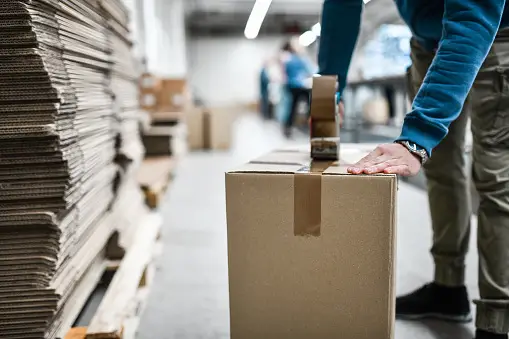When it comes to transporting hazardous materials, understanding the basics of dangerous goods packaging is crucial. It’s not just about moving items from point A to B; it’s about doing it safely and responsibly. Dangerous goods, by their very nature, can pose significant risks during transportation. Adhering to stringent packaging standards and regulations isn’t just a legal requirement; it’s a moral one, ensuring the safety of everyone involved in the transportation process.
Advanced Packaging Design Strategies
Before we dive into materials and technologies, let’s understand why advanced packaging is vital. It’s not just about containing the goods; it’s about ensuring their safe journey from start to finish.
- Materials Matter: Choosing the right materials for packaging dangerous goods is crucial. Materials need to be durable, resistant to chemicals, and able to withstand various transportation stresses. This can range from high-grade plastics to reinforced metals, depending on the nature of the goods.
- Innovative and Sustainable: The packaging industry is constantly evolving, introducing designs that are not only safer but also environmentally friendly. These innovations might include recyclable materials or designs that minimize waste and reduce the carbon footprint.
- Real-Life Success: Success stories of innovative packaging solutions provide valuable insights. These case studies often reveal how specific design elements or material choices played a key role in preventing accidents and ensuring safe transportation.
Labeling for Safety and Compliance
When it comes to hazardous materials, labeling is more than just sticking a tag on a box. It’s a crucial part of communication that ensures everyone involved understands the risks and handling requirements.
- Clear Labels Save Lives: Effective labeling on packages contains crucial information like the nature of the goods, handling instructions, and risk warnings. This not only aids in proper handling but also ensures quick and correct responses in case of emergencies.
- Global Rules: With transportation often crossing international borders, adherence to international labeling standards is essential. These standards ensure uniformity in labeling, making it universally understood and reducing the risk of mishandling.
- Labels in Action: Proper labeling acts as a first line of defense. It informs handlers, transporters, and emergency responders, making it an indispensable tool for accident prevention and efficient emergency response.
Optimizing Documentation for Hazardous Materials
Documentation in the transport of dangerous goods isn’t just paperwork; it’s a roadmap for safety and compliance. Let’s look at how vital these documents are and how technology is making it easier to manage them.
- Paperwork is Key: The required documents for transporting dangerous goods include safety data sheets, transport documents, and emergency response information. These documents provide detailed information on the nature of the goods, risks involved, and emergency protocols.
- Tech to the Rescue: The rise of digital documentation has revolutionized the way information is stored and accessed. Digital platforms allow for real-time tracking, easier accessibility, and improved accuracy in documentation, enhancing overall safety and compliance.
- Keeping Records Straight: Proper documentation management is critical. It involves ensuring that all necessary documents are up-to-date, easily accessible, and accurately reflect the current state of the transported goods. This is essential for audits, inspections, and ensuring compliance with regulations.
Implementing Best Practices in Your Operations
Integrating best practices into the transportation of dangerous goods isn’t just a one-time task; it’s an ongoing commitment. Here’s how you can weave these practices into the fabric of your daily operations.
- Fit into Your Flow: Implementing best practices requires customizing these strategies to fit seamlessly into your existing logistics systems. This may involve assessing current practices, identifying areas for improvement, and integrating new protocols in a way that complements the existing workflow.
- Teach Your Team: Effective training and awareness programs are essential for staff handling dangerous goods. Regular training sessions, workshops, and drills can ensure that staff are well-versed in handling protocols, emergency response procedures, and regulatory changes.
- Stay Sharp and Up-to-Date: The field of dangerous goods transport is ever-evolving, with frequent updates in regulations and best practices. Staying informed through continuous education, attending industry seminars, and subscribing to relevant publications are key to maintaining high safety standards.
Wrapping It Up: The Future of Safe Transportation
As we wrap up our exploration of dangerous goods packaging, it’s clear that going beyond compliance is not just a regulatory necessity but a moral imperative. Effective packaging plays a crucial role in the safe transport of hazardous materials. In this dynamic field, continuous learning and adaptation are key to ensuring the safety of people and the planet. Encouraging a culture of ongoing education and vigilance in the world of dangerous goods packaging is essential for maintaining high safety standards and protecting our future.
